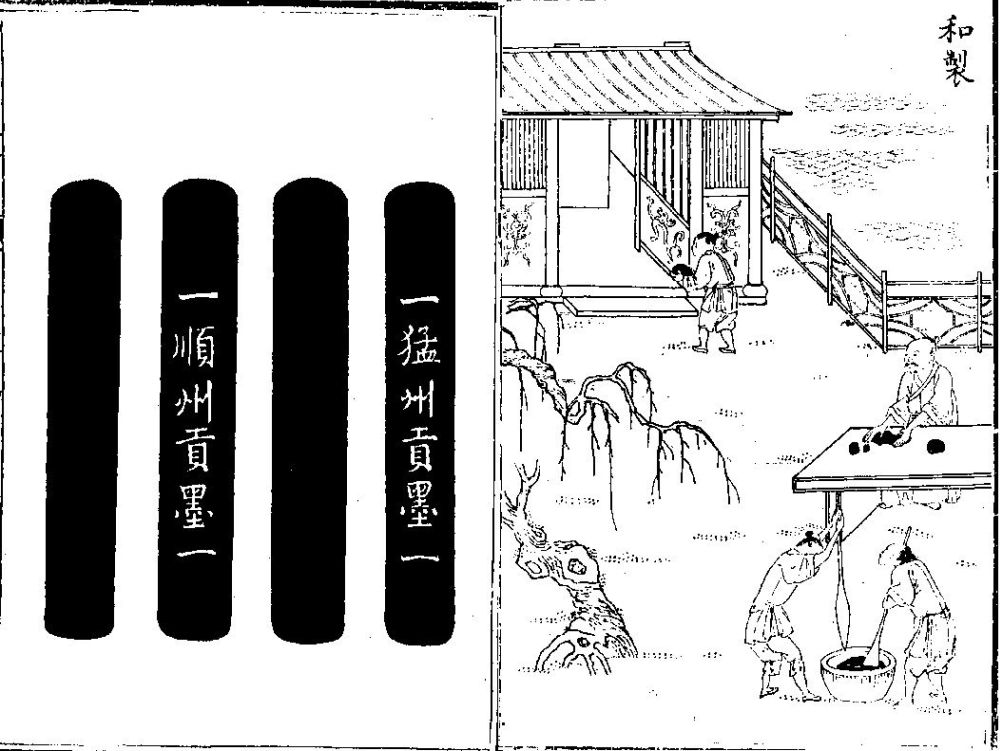Mopu fashi 墨譜法式, short Mopu 墨譜, is a book on the production of inksticks written during the Northern Song period 北宋 (960-1126) by Li Xiaomei 李孝美, courtesy name Boyang 伯揚, from Zhaojun 趙郡 (today's Zhaoxian 趙縣, Hebei). The prefaces of the 3-juan-long book, dated 1095, were written by Ma Jun 馬涓 (d. 1126) and Li Yuanying 李元膺. They praise the author as a veritable expert who travelled a lot to learn more about the production of quality ink for painting and calligraphy.
The first fascicle bears the title "Illustrations" (Tu 圖) because these are the most interesting parts for readers, but the explanative text is of equal importance. It speaks of the collection of pine twigs and wood, the construction of kilns, the quality of charcoal, the control of the fire and the burning process, the creation, collection and refining of soot, the creation of inksticks, and the creation of ink with the help of water and inkstones. The second fascicle is dedicated to the forms (Shi 式) of inksticks, and illustrates the shapes of sticks as used by famous writers or sold by famous producers.
 |
Left: Tribute inksticks (gongmo 貢墨) from Korea (Silla 新羅). Right: Mixing the pine coal and soot with water and glue. |
The last part, which is not illustrated, lists preparation methods (Fa 法) for various ink mixtures, such as glue made of cow horn, buckhorn, fish scales, etc.
| 採松 | Collecting pine wood |
|---|---|
| 右採松之肥潤者,截作小枝,削去簽刺,懼其先成白灰隨烟而入則煤不醇美。 | As in the right [image], take [only] fat and moist pine twigs, take away small branches and cut off side twigs, for fear that these parts will quickly become white ash. If this ash becomes part of the coal, it will be not mellow enough. |
| 魚膠 | Production of fish glue |
| 鯉魚鱗,不計多少,水浸一日,洗令極浄,以無油鍋内添水,用慢火煮一伏時,俟鱗爛,濾去滓,再滓稀稠,得所澄,取清者,俟凝勒,作片子或傾,在半竹筒内,頓風處,俟乾,收。 | Take carp scales, no matter how many, leave soaked in water for one day, wash them very clean, add water to a pan without oil, boil over slow fire for one hour. When the scales are decomposed, let through a sieve to remove dregs. The finest drags will have to deposit. Take the clear substance and have it condensed and solidified. Cut into slices and put them into halved bamboo tubes, place them into a windy place and use them when dry. |
Even if most of these methods of inkstick preparation were not continued in late imperial times, Li's information is very important for learning more about the history of arts and techniques.
The text is included in the series Siku quanshu 四庫全書 and Sheyuan mocui 涉園墨萃.